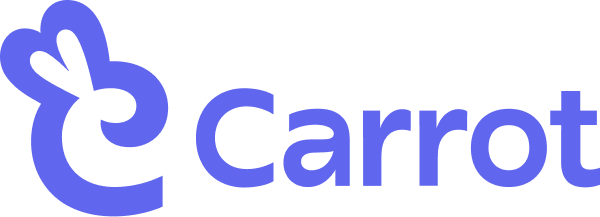New + updated
The 12 Best Snowboard Brands of 2024
March 4th
Did you know, by the time you finish reading this sentence, 500 hours of video will have been uploaded to YouTube, more than 7,000 new blog posts will have been published, and approximately 900,000 social media posts will have been shared? Alarming right?
With so much content being posted online, it’s hard for your brand’s voice to be heard by your target audience. And this is where content curation can be a game changer.
Amidst this never-ending ocean of information, content curation acts like a compass, helping us navigate, discover, and highlight the most valuable, relevant, and entertaining pieces that our target audience will love to interact with.
So whether you are an emerging content creator or an experienced digital marketer, this blog is for you! We will discuss content curation practices, industry trends, unique strategies, and everything in between. Let’s get started!
Related: 4 Best Bookmark Managers to Save and Organize Links
What is Content Curation?

Before we go further, let us briefly explain what content curation is all about. Simply put, content curation is the process of discovering, gathering, organizing, and sharing the most relevant and high-quality content on a specific topic for a particular audience.
It’s similar to being a museum curator who selects the best pieces of art to exhibit. As a content curator, you navigate the vast ocean of digital information, handpicking the most valuable, interesting, and informative pieces— articles, blogs, videos, podcasts, or infographics.
This curated content is then presented to your audience in a meaningful and organized manner, which saves them time and effort in finding quality information. Content curation not only serves to provide value to your audience but also allows you to establish credibility and authority in your field without constantly generating new content.
While this sounds like a simple thing to do, for it to be effective, you need to have a real marketing strategy to harbor engagement and authority in your niche.
Do we Really Need Content Curation in our Marketing Strategy?
The simple answer is, Yes! While brands need to market themselves, your audience may not always find reading content that’s only targeted to your products/services engaging. Bringing diversity and curating content can help avoid monotony and make your page seem more human.
1. Showcasing Expertise
By curating and sharing valuable content related to your industry or niche, you demonstrate your expertise and authority in the field. This builds trust with your audience and establishes your brand as a reliable source of information.
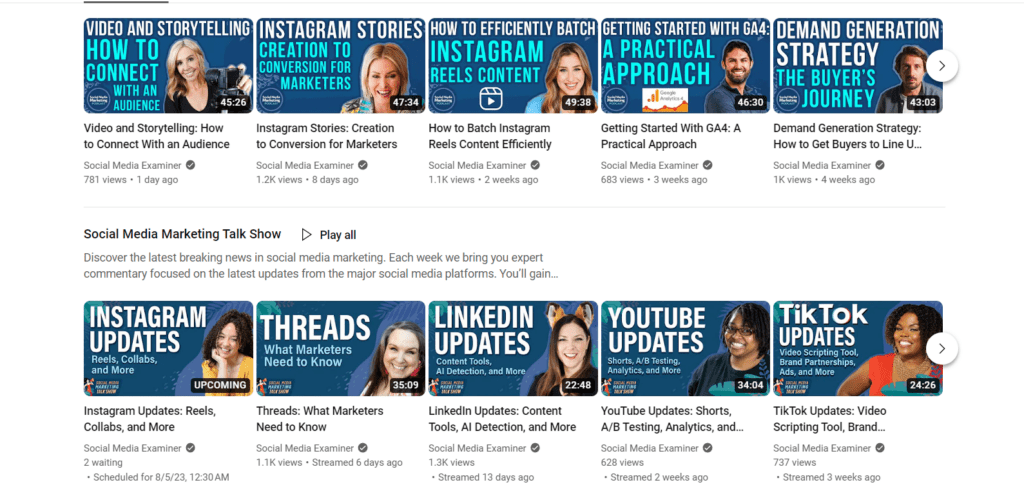


Source: Social Examiner YouTube
For example, Social Media Examiner curates content related to social media marketing, gathering insights and expertise from industry experts to share with its audience. They offer valuable articles, podcasts, and videos to help businesses navigate the ever-changing landscape of social media.
2. Time and Resource Efficiency
Content curation allows you to leverage existing high-quality content produced by others. It saves time and resources that would otherwise be spent solely on creating original content while still providing value to your audience.
3. Audience Engagement
Providing curated content that aligns with your audience’s interests keeps them engaged and coming back for more. It shows that you understand their needs and are dedicated to serving them with relevant information.
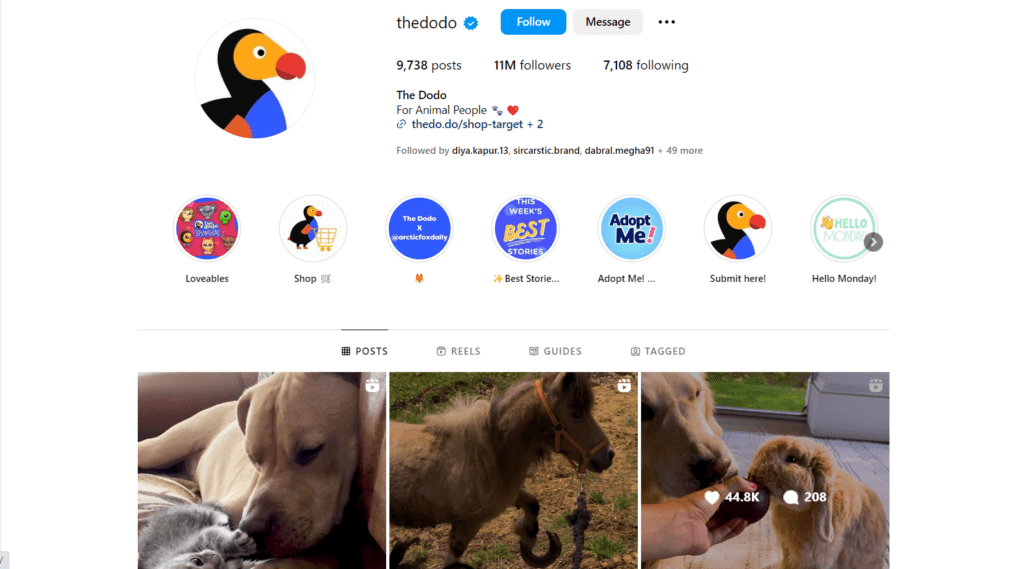


Source: Dodo Instagram
The Dodo is the best example of user-generated content and content curation, with a whooping following of 11M followers and their oh-so-adorable stories that are heart-touching. They own the animal media space from Instagram to Twitter.
4. Building Relationships
When you curate content from others, you have the opportunity to connect with content creators and industry influencers. This can lead to collaborations, guest posting opportunities, and an expanded network within your niche.
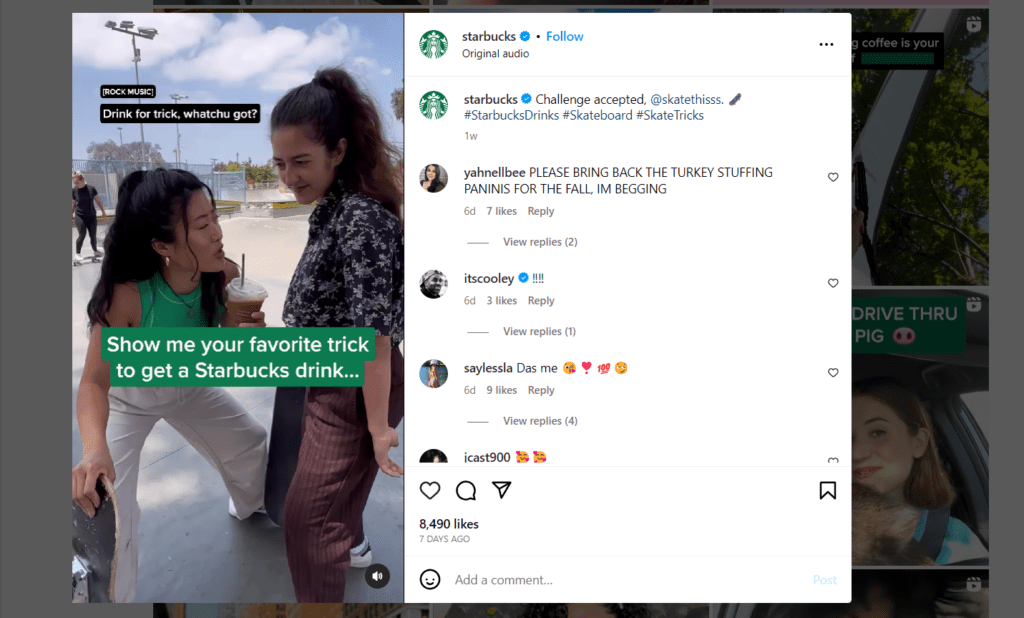


Source: Starbucks Instagram
A good example of this is how Starbucks collaborates with Influencers for engaging content and keeping their drinks always the center of attention.
5. Social Media Growth
Curated content is often well-received on social media platforms because it’s valuable, informative, and shareable. This can increase your brand’s visibility, attract new followers, and amplify your reach.
6. Diversifying Content Types
Content curation allows you to present information in various formats, catering to the different preferences of your audience. This diversity can lead to a more engaging and well-rounded brand experience.



Source: TEDx Talks Youtube
TED Talks curate video presentations from speakers covering diverse topics and disciplines. Their curation efforts allow them to offer a wide range of insightful talks that cater to a global audience.
7. Enhancing Brand Personality
The way you curate and present content can reflect your brand’s personality and values. This helps to humanize your brand and create a stronger connection with your audience.
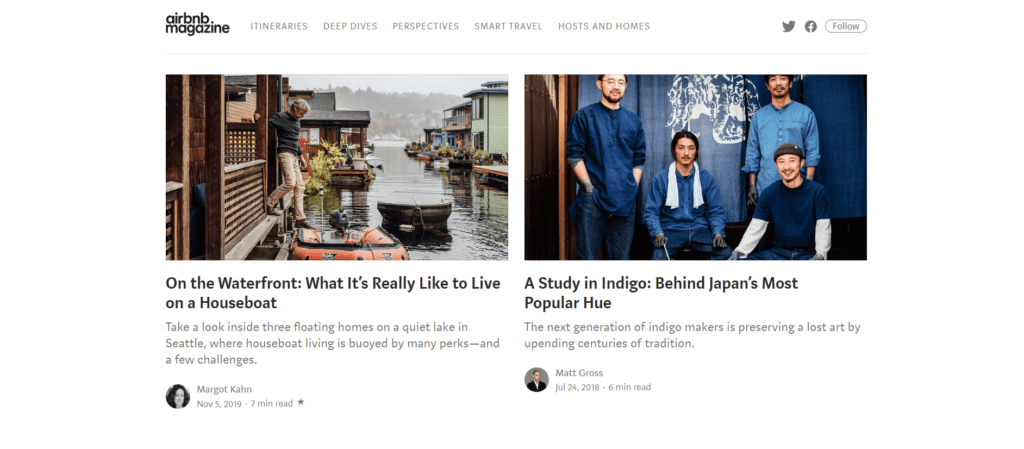


Airbnb Magazine curates travel-related content, including articles, photos, and guides, that showcase the unique experiences and destinations tied to the Airbnb brand.
Be careful not to overdo it; this strategy is only most effective when combined with original content creation. According to Curata data, leading marketers use a mixture of 65 percent created content and 25 percent curated content.
Related: 7 Best Visual Bookmarking Managers To Organize Your Browsing
How To Get Started with Content Curation?
While content curation will differ from brand to brand here are a few basics that can help you get started:
1. Define Your Audience and Niche
Identify your target audience and the specific niche or industry you want to focus on. Understand their interests, preferences, and needs to curate content that resonates with them.
2. Set Clear Goals
Determine your content curation goals. Are you aiming to establish expertise, engage your audience, drive traffic, or enhance your brand’s image? Clear goals will guide your curation strategy.
3. Select Curation Platforms & Tools
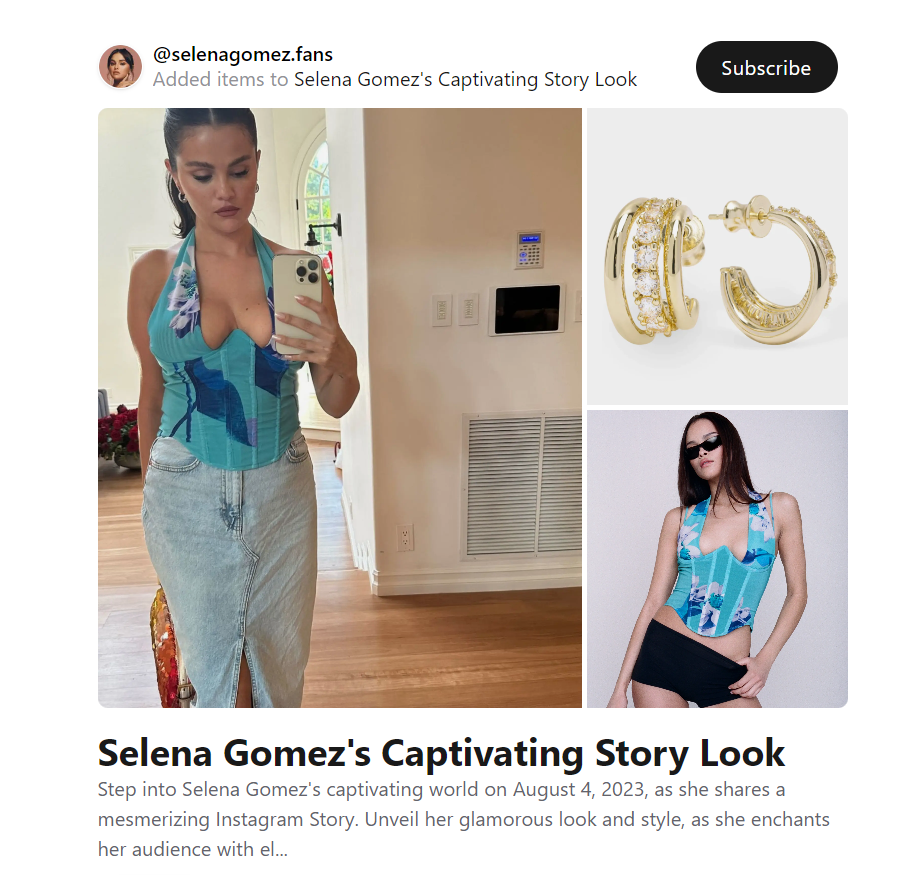


Source: Carrot
Choose platforms where you’ll curate and share content. This could include a blog, social media profiles, and email newsletters. Leverage a content curation tool like Carrot to discover and organize content from various sources.
Here’s what you can do with Carrot’s Creator Program:
- Get one link to store all your product recommendations, curated content & affiliates in visually appealing shoppable collections, itineraries, or mood boards
- Flexibility to create both free and subscriber-only content
- Access to all your subscriber’s emails for you to personalize your marketing strategy and build lasting relationships
- Visually bookmark and curate diverse content from all over the internet ranging from posts, products, places, and more
- Discover, collaborate, and share easily
4. Add Value with Commentary
Provide your insights, commentary, or context when sharing curated content. Explain why you find the content valuable or share your perspective on its relevance.
5. Cite and Attribute Sources
Always give proper credit to the original creators of the curated content. Include clear attribution, such as author names, publication dates, and source links.
6. Maintain Consistency
Develop a consistent curation schedule. Whether you curate daily, weekly, or monthly, maintaining a reliable posting frequency helps build trust and keeps your audience engaged.
7. Engage with Your Audience
Encourage discussions and interactions around the curated content. Respond to comments, answer questions, and facilitate meaningful conversations.
8. Measure and Adjust
Monitor the performance of your curated content. Use analytics to track engagement, clicks, shares, and other relevant metrics. Adjust your curation strategy based on what resonates most with your audience.



9. Stay Ethical and Legal
Respect copyright and fair use guidelines. Ensure you have the right to curate and share the content you choose. When in doubt, seek permission from content creators.
Curate and Shine with Carrot!
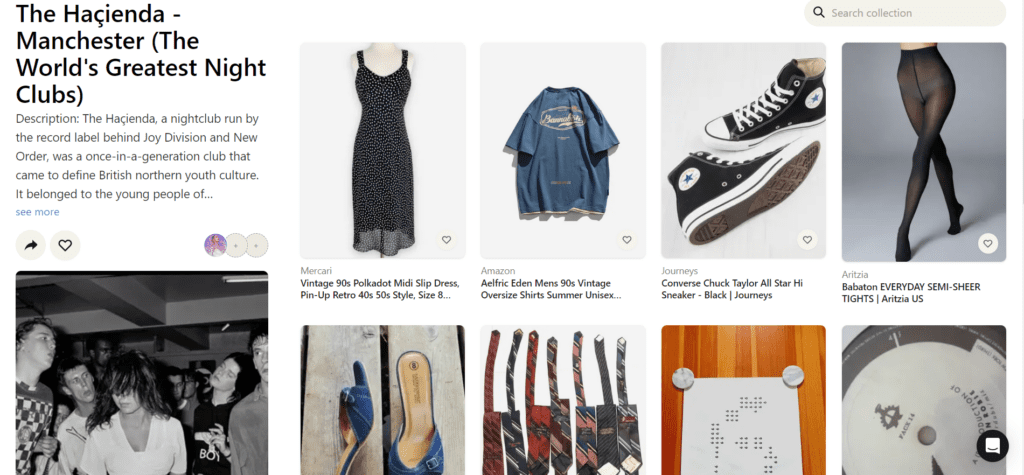


Source: Paris Hilton | The Haçienda – Manchester (The World’s Greatest Night Clubs)
Carrot is a tool designed to make your content curation journey easy and streamlined. You can create travel itineraries, product recommendations, affiliate collections, mood boards, and literally any type of collection you want. This tool lets you visually bookmark and organize your finds so you can share them with your friends, family, or your followers easily.
Carrot also offers tools for influencers and brands to market and maximize their earnings.
Master Content Curation with Carrot
Discover, organize, share, and maximize your earnings with Carrot. This tool is perfect for beginners and influencers looking to curate content and share their ideas with the world!
